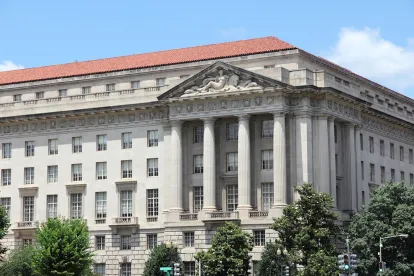On May 6, 2022, the U.S. Environmental Protection Agency (EPA) published a notice in the Federal Register announcing the availability of, and requesting comments on, data related to aquatic toxicity of chitosan salts. 87 Fed. Reg. 27059. Specifically, EPA is seeking comments on the following two aquatic toxicity reports submitted by Tidal Vision Products, LLC (Tidal Vision), the company that submitted a petition to EPA on October 10, 2018, requesting that EPA add chitosan to the list of active ingredients eligible for EPA’s minimum risk pesticide exemption under Federal Insecticide, Fungicide, and Rodenticide Act (FIFRA) Section 25(b):
-
Tidal Vision USA. (2019). Aquatic Toxicology Report by Eurofins Environmental Testing Test America. Lab I.D. No. B4345. Report Date: June 17, 2019. EPA Master Record Identification (MRID) 51861901.
-
Tidal Vision USA. (2019). Aquatic Toxicology Report by Eurofins Environmental Testing Test America. Lab I.D. No. B4421. Report Date: August 28, 2019. EPA Master Record Identification (MRID) 51861902.
EPA is seeking input on how these reports may be used by EPA in its assessment of aquatic toxicity of chitosan and its salts. EPA states “chitosan may form as a salt (e.g., acetate, lactate, hydrochloride, and salicylate) when it is solubilized in acids for end use product formulation and subsequently applied in the environment” and the new information submitted by Tidal Vision pertains to these salts. Comments on the aquatic toxicity reports are due on or before June 6, 2022, in Docket EPA-HQ-OPP-2019-0701.
As background, EPA on August 20, 2020, announced that it was seeking to add chitosan to the list of active ingredients allowed in minimum risk pesticides that are exempt from pesticide registration requirements and was providing to the United States Department of Agriculture (USDA) for review a draft regulatory document titled ‘‘Pesticides; Addition of Chitosan to the List of Active Ingredients Allowed in Exempted Minimum Risk Pesticides Products.” A minimum risk product must meet six specific conditions to be exempt from pesticide registration. One of those conditions is that the active ingredient in the minimum risk pesticide be one that is listed specifically by EPA. If EPA adds chitosan to the list of minimum risk pesticide active ingredients, pesticide products containing chitosan could qualify as minimum risk pesticides provided the other conditions also are satisfied (e.g., using inert ingredients approved by EPA for use in minimum risk pesticides, not making any public health claims).
On November 2, 2020, EPA requested comments on the proposed rule to add chitosan to the list of active ingredients eligible for the exemption. In the May 6, 2022, Notice, EPA states that comments received on the proposed rule expressed concerns regarding derivatives of chitosan that are likely to be produced when chitosan is mixed with certain acids and on the potential hazard for aquatic organisms exposed to chitosan salts. Because of the concerns raised, EPA now is requesting comments on the two aquatic toxicity reports that pertain to these salts.
Commentary
EPA continues to remain focused on listing this specific substance rather than address other issues related to minimum risk pesticides that have been raised by industry to EPA over many years. There is, for example, a petition filed in 2006 by the Consumer Specialty Products Association (CSPA) requesting that EPA modify the minimum risk pesticide regulations to exclude products claiming to control public health pests from the Section 25(b) exemption. Comments submitted in response to the November 2, 2020, proposed rule raise additional concerns, including but not limited to the fact that the vast majority of states now require registration of minimum risk pesticides, thus shifting the burden away from EPA with costly and potential inconsistent results.
Though this EPA list is called “minimum risk,” it more accurately could be described as -- “so safe no one could, or at least should, have any concern about toxicity.” There is long-standing reluctance for EPA to call any pesticide whatsoever as “safe” for various reasons, even to the point of an outright prohibition on using the word “safe” on registered labels. (This is the clever distinction that “minimum risk” pesticides do meet the FIFRA definition of a pesticide, but the Section 25(b) designation allows that the label not be subject to EPA review and registration of the label.)
This issue of possible risks from adding chitosan to the Section 25(b) list in light of the studies EPA seeks comment on appears to allow EPA to back away from its intended designation as minimum risk or to have the public comment reaffirm EPA’s assessment that chitosan’s safety profile is sufficiently beyond reproach to align with the other members of this category. There are many other pesticides considered of very low risk but not so low as to have made the Section 25(b) list until now. That there is a hint of debate about possible toxicity could signal that future additions to the list are being contemplated to encourage more “minimum risk” product development. Or more simply, it may signal EPA’s reaction to the comments received has triggered some reconsideration of how “minimum” any minimum risk needs to be to qualify for the Section 25(b) list.






 />i
/>i
